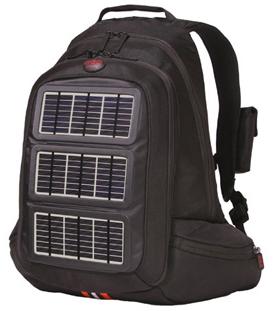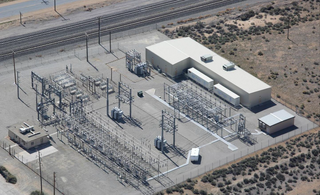Related Research Articles

Renewable energy is energy that is collected from renewable resources that are naturally replenished on a human timescale. It includes sources such as sunlight, wind, rain, tides, waves, and geothermal heat. Renewable energy stands in contrast to fossil fuels, which are being used far more quickly than they are being replenished. Although most renewable energy sources are sustainable, some are not. For example, some biomass sources are considered unsustainable at current rates of exploitation.
Distributed generation, also distributed energy, on-site generation (OSG), or district/decentralized energy, is electrical generation and storage performed by a variety of small, grid-connected or distribution system-connected devices referred to as distributed energy resources (DER).
Measurement and signature intelligence (MASINT) is a technical branch of intelligence gathering, which serves to detect, track, identify or describe the distinctive characteristics (signatures) of fixed or dynamic target sources. This often includes radar intelligence, acoustic intelligence, nuclear intelligence, and chemical and biological intelligence. MASINT is defined as scientific and technical intelligence derived from the analysis of data obtained from sensing instruments for the purpose of identifying any distinctive features associated with the source, emitter or sender, to facilitate the latter's measurement and identification.

Hybrid power are combinations between different technologies to produce power.

Solar power in Australia is a fast growing industry. As of 2021, Australia's over 3.04 million solar PV installations had a combined capacity of 25,321 MW photovoltaic (PV) solar power, of which at least 4,613 MW were installed in the preceding 12 months. In 2019, 59 solar PV projects with a combined capacity of 2,881 MW were either under construction, constructed or due to start construction having reached financial closure. Solar accounted for 9.9% of Australia's total electrical energy production in 2020.
For solar power, South Asia has the ideal combination of both high solar insolation and a high density of potential customers.

According to preliminary data from the US Energy Information Administration, renewable energy accounted for about 12.6% of total primary energy consumption and about 19.8% of the domestically produced electricity in the United States in 2020.

Solar power is the conversion of renewable energy from sunlight into electricity, either directly using photovoltaics (PV), indirectly using concentrated solar power, or a combination. Concentrated solar power systems use lenses or mirrors and solar tracking systems to focus a large area of sunlight into a small beam. Photovoltaic cells convert light into an electric current using the photovoltaic effect.
Geophysical MASINT is a branch of Measurement and Signature Intelligence (MASINT) that involves phenomena transmitted through the earth and manmade structures including emitted or reflected sounds, pressure waves, vibrations, and magnetic field or ionosphere disturbances.

A photovoltaic system, also PV system or solar power system, is an electric power system designed to supply usable solar power by means of photovoltaics. It consists of an arrangement of several components, including solar panels to absorb and convert sunlight into electricity, a solar inverter to convert the output from direct to alternating current, as well as mounting, cabling, and other electrical accessories to set up a working system. It may also use a solar tracking system to improve the system's overall performance and include an integrated battery solution, as prices for storage devices are expected to decline. Strictly speaking, a solar array only encompasses the ensemble of solar panels, the visible part of the PV system, and does not include all the other hardware, often summarized as balance of system (BOS). As PV systems convert light directly into electricity, they are not to be confused with other solar technologies, such as concentrated solar power or solar thermal, used for heating and cooling.

A Solar backpack is a backpack equipped with thin film solar cells and batteries. The solar panels convert sunlight into electricity, which is stored in the batteries and can be used to power portable electronic appliances like mobile phones and laptops.
South Australia has a variety of natural energy sources. It contains significant reserves of fossil fuels such as natural gas, coal, and oil – although there are incentives to phase these out in favour of clean energy. The state also contains large amounts of uranium, including the world's single biggest deposit at Olympic Dam, which represents 30% of the world's total resource. There are also expanses of land suitable for solar and wind farms, and rocks with potential for geothermal energy.

Variable renewable energy (VRE) or intermittent renewable energy sources (IRES) are renewable energy sources that are not dispatchable due to their fluctuating nature, such as wind power and solar power, as opposed to controllable renewable energy sources, such as dammed hydroelectricity or biomass, or relatively constant sources, such as geothermal power.

Counter-IED equipment are created primarily for military and law enforcement. They are used for standoff detection of explosives and explosive precursor components and defeating the Improvised Explosive Devices (IEDs) devices themselves as part of a broader counter-terrorism, counter-insurgency, or law enforcement effort.

A battery storage power station is a type of energy storage power station that uses a group of batteries to store electrical energy. Battery storage is the fastest responding dispatchable source of power on grids, and it is used to stabilise grids, as battery storage can transition from standby to full power within milliseconds to deal with grid failures.
The Buckeye system is an operational airborne surveying system that provides high-resolution spatial imagery over an area of interest to support military operations involved with intelligence, surveillance, and reconnaissance. Once mounted on a helicopter or an unmanned aerial vehicle (UAV), it incorporates visual information from a digital camera and elevation data from a Light Detection and Ranging (LIDAR) system to create a two and three-dimensional colored map with orthorectified, 4 to 6-inch resolution.
Unattended Transient Acoustic MASINT Sensor (UTAMS)Mortar, Rocket, Explosive Locator System is an acoustic localization sensor system developed by the Sensors and Electronic Devices Directorate (SEDD) of the U.S. Army Research Laboratory (ARL) in 2004. This technology is utilized to detect and isolate transient events such as mortar or rocket firings, munition impacts, and other explosive events. It consists of an array of acoustic sensor stations that are linked via radio to a receiving base. Each sensor has the ability to monitor hostile territory, international borders, and/or detect indirect weapon fire covertly with 24-hour surveillance. These small, inexpensive, non-imaging sensors can monitor large areas without a significant need for power sources and manpower.
The Tesla Megapack is large-scale rechargeable lithium-ion battery stationary energy storage product, intended for use at battery storage power stations, manufactured by Tesla Energy, the clean energy subsidiary of Tesla, Inc.
The infrasonic sensing array, designed by the U.S. Army Research Laboratory (ARL), was a military device that detected and located explosive events with inaudible frequencies at long ranges, such as artillery, missiles, and helicopters through the use of the array process. It was also used for direction-finding and positioning for navigational purposes and for detecting atmospheric events for battlefield weather prediction.

Galileo was an American robotic space probe that studied the planet Jupiter and its moons, as well as the asteroids Gaspra and Ida. Named after the Italian astronomer Galileo Galilei, it consisted of an orbiter and an entry probe. It was delivered into Earth orbit on October 18, 1989 by Space ShuttleAtlantis. Galileo arrived at Jupiter on December 7, 1995, after gravitational assist flybys of Venus and Earth, and became the first spacecraft to orbit an outer planet.
References
- 1 2 3 Maneice, Carlotta. "Department of Justice uses Army equipment to locate shooters". Army.mil. US Army. Retrieved 2 July 2018.
- ↑ McGarry, Brendan (28 November 2017). "Army Tests New Acoustic Threat Detection System". DefenseTech. Military.com. Retrieved 2 July 2018.
- 1 2 "Army tech update: 'Eyes of the Apache,' harnessing the sun and building a better weapon". AL.com. Retrieved 2018-08-28.
- ↑ "Solar Helps US Army Keep Snipers At Bay | EarthTechling". earthtechling.com. 23 June 2013. Retrieved 2018-08-28.
- 1 2 "Army Scientists Developing Deployable Renewable Equipment | CleanTechnica". cleantechnica.com. 17 May 2012. Retrieved 2018-08-28.